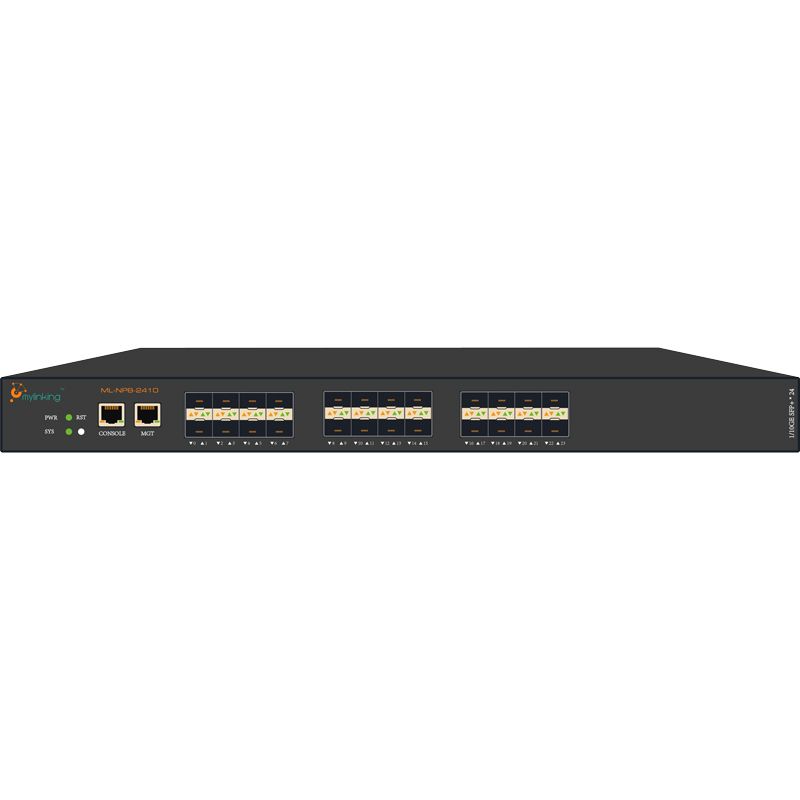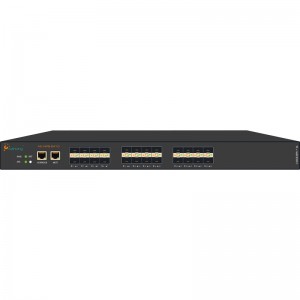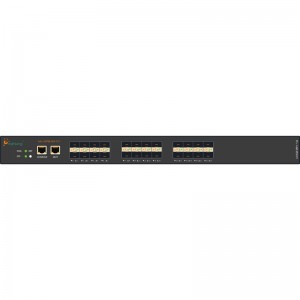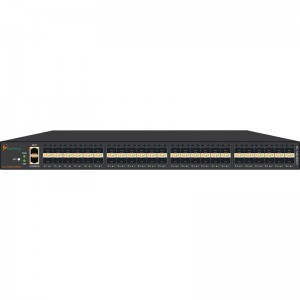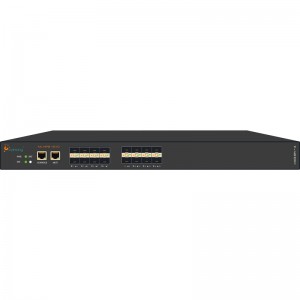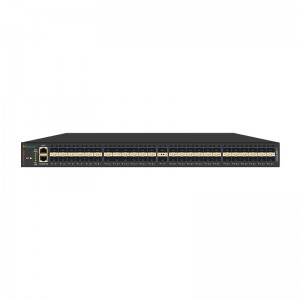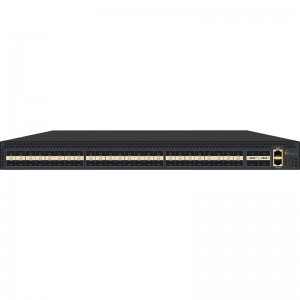Mylinking™ Network Packet Broker(NPB) ML-NPB-2410
24*10GE SFP+, Max 240Gbps
1- Overviews
- A full visual control of Data Acquisition device(24*10GE SFP+ ports)
- A full Data Scheduling Management device(duplex Rx/Tx processing)
- full pre-processing and re-distribution device(bidirectional bandwidth 240Gbps)
- Supported collection & reception of link data from different network element locations
- Supported UDF matching, the user-defined packet offsets and key fields, and more accurately guides the output of data that the user cares about.
- Supported real-time the health status detection(port health check) of the back-end monitoring and analysis devices service process, which connected to different output ports. When the service process fails, the faulty device is automatically removed.
- Supported to automatically recognizes multi-layer MPLS and multi-layer VLAN TAG tags, and implements traffic output policies based on user configurations based on features such as MPLS Lable, MPLS TTL, VLAN ID, and VLAN Priority.
- Supported automatically identify various tunneling protocols such as GTP/GRE/PPTP/L2TP/PPPOE, and the implement traffic output policies based on the inner or outer layer characteristics of the tunnel.
- Traffic splitting policy supports data packet filtering and matching, including quintuple-based (source IP, destination IP, source port, destination port, protocol number), and packets.

2- System Block Diagram
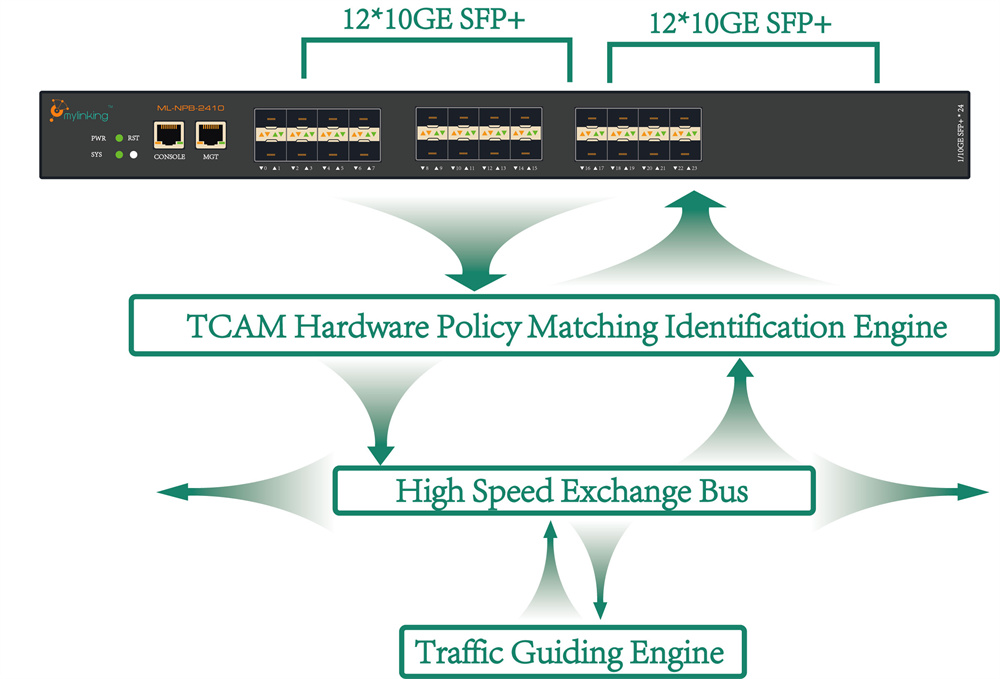
3- Operating Principle
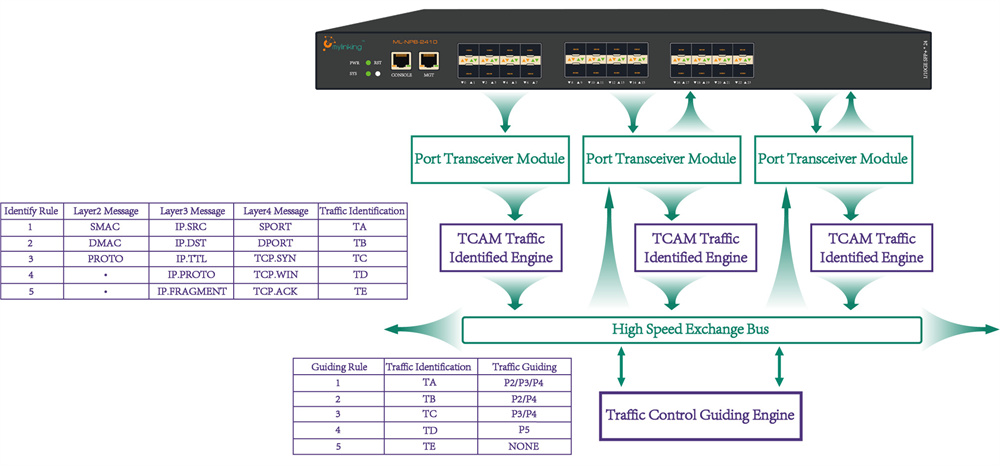
4- Intelligent Traffic Processing Abilities

ASIC Chip Plus TCAM CPU
240Gbps intelligent traffic processing capabilities

10GE Traffic Acquisition
10GE 24 ports, Rx/Tx duplex processing, up to 240Gbps Traffic Data Transceiver at same time, for network traffic data/packet Capture, simple Pre-processing

Packet Replication
Packet replicated from 1 port to multiple N ports, or multiple N ports aggregated, then replicated to multiple M ports

Packet Aggregation
Packet replicated from 1 port to multiple N ports, or multiple N ports aggregated, then replicated to multiple M ports

Packet Forwarding
Classified the incoming metdata accurately and discarded or forwarded different data services to multiple interface outputs according to user’s predefined rules.

Packet Filtering
Supported L2-L7 packet filtering matching, such as SMAC, DMAC, SIP, DIP, Sport, Dport, TTL, SYN, ACK, FIN, Ethernet type field and value, IP protocol number, TOS, etc. also supported flexible combination of filtering rules.

Load Balance
Supported load balance Hash algorithm and session-based weight sharing algorithm according to L2-L7 layer characteristics to ensure that the port output traffic dynamic of load balancing

UDF Match
Supported the matching of any key field in the first 128 bytes of a packet. Customized the Offset Value and Key Field Length and Content, and determining the traffic output policy according to the user configuration
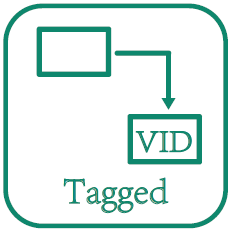


VLAN Tagged
VLAN Untagged
VLAN Replaced
Supported the matching of any key field in the first 128 bytes of a packet. The user can customize the offset value and key field length and content, and determine the traffic output policy according to the user configuration.
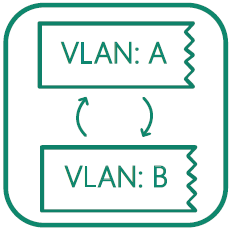
MAC Address Replacing
Supported the replacement of the destination MAC address in the original data packet, which can be implemented according to the user's configuration

3G/4G Mobile Protocol Identification and Classification
Supported to identify mobile network elements such as (Gb, Gn, IuPS, S1-MME, S1-U, X2-U, S3, S4, S5, S6a, S11, etc. interface). You can implement traffic output policies based on features such as GTPV1-C, GTPV1-U, GTPV2-C, SCTP, and S1-AP based on user configurations.

Ports Healthy Detection
Supported real-time detection of the service process health of the back-end monitoring and analysis equipment connected to different output ports. When the service process fails, the faulty device is automatically removed. After the faulty device is recovered, the system automatically returns to the load balancing group to ensure the reliability of multi-port load balancing.
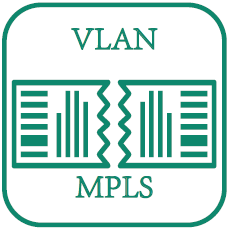
VLAN, MPLS Untagged
Supported the VLAN, MPLS header stripping in the original data packet output.

Tunneling Protocol Identification
Supported automatically identify various tunneling protocols such as GTP / GRE / PPTP / L2TP / PPPOE. According to the user configuration, the traffic output strategy can be implemented according to the inner or outer layer of the tunnel

Unified Control Platform
Supported mylinking™ Visibilityl Control Platform Access

1+1 Redundant Power System(RPS)
Supported 1+1 Dual Redundant Power System
5- Mylinking™ Network Packet Broker Typical Application Structures
5.1 Mylinking™ Network Packet Broker N*10GE to 10GE Data Aggregation Application(as following)
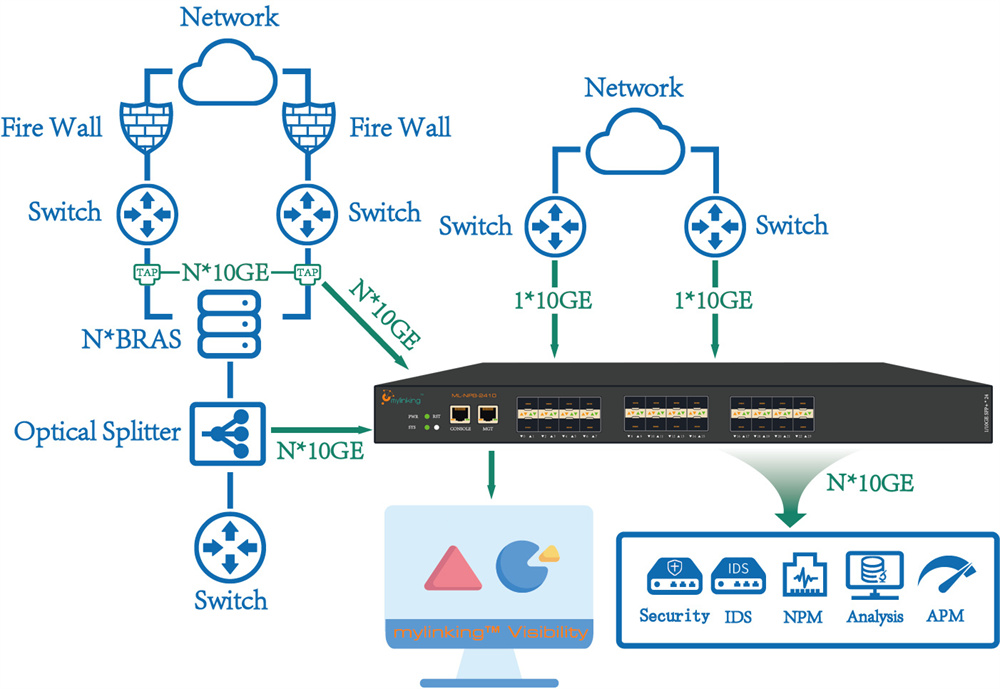
5.2 Mylinking™ Network Packet Broker GE/10GE Hybrid Access Application(as following)
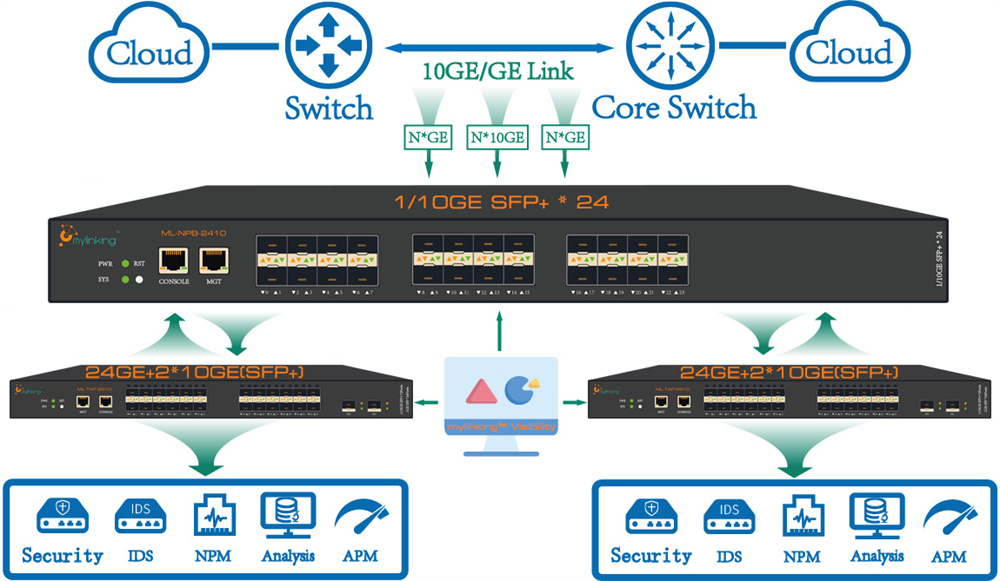
6- Specifications
|
ML-NPB-2410 Mylinking™ Network Packet Broker TAP/NPB Functional Parameters |
||
|
Network Interface |
10GE |
24*10GE/GE SFP+ slot; support single/multiple mode fiber |
|
Out-of-Band MGT interface |
1*10/100/1000M electrical port |
|
|
Deploy mode |
10G optical splitting |
Support 12*10G bidirectional link traffic acquisition |
|
10G mirror acquisition |
Support max to 24*10G mirror traffic inputting | |
|
Optical inputting |
Input port supports single fiber splitting input; |
|
|
Port multiplexing |
Support input port as output port; |
|
|
Flow output |
Support 24 channels of 10GE flow output; |
|
|
Traffic aggregating/replicating/distribution |
Supported |
|
|
QTYs of links supporting traffic duplicating/aggregating |
1->N way traffic replication (N<24) N->1 channel traffic aggregation (N<24) Group G (M->N way) grouped traffic replication aggregation [ G*(M+N) < 24 ] |
|
|
Port-based traffic identification diverting |
Supported |
|
|
port five tuple traffic identification diverting |
Supported |
|
|
Traffic identification divert strategy based on key tag of protocol header |
Supported |
|
|
Ethernet encapsulation unrelated support |
Supported |
|
|
CONSOLE MGT |
Supported |
|
|
IP/WEB MGT |
Supported |
|
|
SNMP MGT |
Supported |
|
|
TELNET/SSH MGT |
Supported |
|
|
SYSLOG protocol |
Supported |
|
|
User authentication |
Based on users’ password authentication | |
|
Electric(1+1 Redundant Power System-RPS) |
Rate power supply voltage |
AC110-240V/DC-48V(Optional) |
|
Rate power supply frequency |
AC-50HZ |
|
|
Rate input current |
AC-3A / DC-10A |
|
|
Rate power |
140W/150W/150W |
|
|
Environment |
Working temperature |
0-50℃ |
|
Storage temperature |
-20-70℃ |
|
|
Working humidity |
10%-95%, no condensation |
|
|
User Configuration |
Console configuration |
RS232 interface, 9600,8,N,1 |
|
Password authentication |
Supported |
|
|
Height of Chassis |
(U) |
1U 445mm*44mm*402mm |
7- Order Information
ML-NPB-0810 mylinking™ Network Packet Broker 8*10GE/GE SFP+ ports, max 80Gbps
ML-NPB-1610 mylinking™ Network Packet Broker 16*10GE/GE SFP+ ports, max 160Gbps
ML-NPB-2410 mylinking™ Network Packet Broker 24*10GE/GE SFP+ ports, max 240Gbps
FYR: Packet Fitering of Mylinking™ Network Packet Broker
Packet Filtering Through the inspection module, the firewall can intercept and check all outbound data.The firewall inspection module first verifies whether the packet conforms to the filtering rules. Regardless of whether the packet conforms to the filtering rules, the firewall shall record the packet situation, and the packet that does not conform to the rules shall alarm or notify the administrator.Depending on the packet filtering strategy, the firewall may or may not send a message to the sender for dropped packets.The packet checking module can check all the information in the packet, generally the IP header of the network layer and the header of the transport layer.Packet filtering generally checks for the following items:
- IP source address;
- IP destination address;
- Protocol types (TCP packets, UDP packets and ICMP packets);
- The source port of TCP or UDP;
- The destination port of TCP or UDP;
- ICMP message type;
- The ACK bit in the TCP header.

